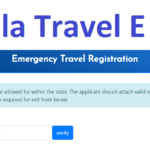While most businesses that open will eventually close their doors at some point, you will still need to take the necessary steps to file for official business closure. In fact, simply choosing to walk away from your business can have dire consequences, as it can lead to unnecessary and excessive fees, as well as litigation and damage to one’s business as well as personal reputation and credibility.
There is a right way and a wrong way to close your Canadian business permanently, and we will focus on the correct way in this article.
Cancelling an Existing Business Registration
If your business is no longer viable and ceases its business operations, then you will need to cancel an existing business registration. You will also not have to worry about paying a filing fee to cancel your business’s name.
The next step involves submitting the canceled registration in person at the Public Office in your city. You will also have the option to do so via mail to the Branch.
Online is yet another viable option, as you can visit the website in your jurisdiction that specializes in business name amendments and cancellations, such as Ontario.ca if you live in the province of Ontario. Also, please note that you will receive a confirmation via mail-in roughly three weeks to confirm the changes that you wanted to make.
To ensure that the Public Record is 100% accurate, the Central Production and Verification Services Branch must be notified when you decide to make any changes to your registration information. For instance, changes may involve changes in business partners or business activity or changes to your business’s address.
Such changes must be filed on the form provided by the Ministry within fifteen days once the changes have been made. As mentioned, there is no filing fee involved, unless you decide to change the name of your business registration, as doing so is considered a new registration, so you will need to pay the applicable fees in such a scenario.
Dissolving a Business Corporation
The dissolution process will differ based on the unique situation that your business is in. For example, a corporation can only dissolve once it has absolved itself of all liabilities and once its assets have been seized or sold. As such, if you still have some assets remaining in the business then we would suggest that you try and liquidate said assets before you try and dissolve your corporation.
Once a resolution to dissolve has been issued by either a class of shareholders or by the company’s shareholders, the assets of the company are distributed by the corporation. All liabilities are discarded according to the Articles and Canada Business Corporation Act.
The corporation will also have the option at this point to apply for a Certificate of Dissolution: To do so, a signed copy of the Articles of Dissolution will need to be submitted to the Government of Canada.
It is also possible to dissolve your business corporation before you dissolve your assets. To do so, you will need to apply for a Certificate of Intent to Dissolve and submit it to the Government of Canada. It is also important to note that the purpose of the Certificate is to issue a notice to both the general public and the corporation’s creditors that the company has ceased its business operations.
Once the Certificate of Intent to Dissolve has been submitted and issued, the next step will involve dispensing any corporate assets that remain to the applicable shareholders, in strict accordance with the Canada Business Corporation Act. Then, all pertinent assets are liquidated, and the corporation can then apply for an actual Certificate of Dissolution to finalize the corporate dissolution process.
What’s more, Corporations Canada will thoroughly review your application to ensure that your business has met all requirements before they decide to issue a Certificate of Dissolution to complete the process.
Tax Obligations After Closing Your Business
When you decide to close your business and have no need for your Business number with the Canada Revenue Agency, you will need to notify the Canada Revenue Agency. You must file your final tax returns, and pay off any outstanding balances before the Business number. Then, and only then, can you officially cease any business operations?
You will also need to take care of your Business account. In other words, everything that you opened when your company first opened shop will need to be terminated. This may include your tax accounts and your corporation accounts, as well as your registration account.
You can either opt to voluntarily dissolve your business or cancel your business registration for your partnership or sole proprietorship. If you have dissolved your corporation, you will also need to file a final tax return.
Your PST, RST, and QST — if applicable — accounts will also need to be terminated with the appropriate provincial agency, and your payroll accounts will also need to be terminated with the Canada Revenue Agency. HST and GST accounts will also need to be closed with the Canada Revenue Agency.
Please note that those mentioned above can only be completed if there is no balance owing to the CRA, or with any other relevant regulatory body for that matter. If you have any filings or returns outstanding or have a balance owing, then the Canadian government can prevent you from closing your company.
Matters can be further complicated, as they may increase their collection attempts, knowing that you plan to close your business soon. As can be seen, many steps need to be taken before your company ceases its operations, and we would recommend that you adhere to these steps to ensure a hassle-free and expedited dissolution process.











